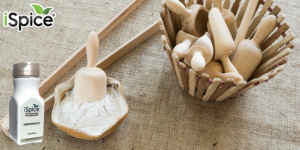 Arrowroot is a starchy vegetable that is commonly used as a thickening agent in recipes. It can be found fresh or as a powder, and it is also commonly used as an ingredient in vegan and vegetarian dishes. It is also an excellent substitute for cornstarch in soups, sauces, and gravies as it has a very similar texture.
Arrowroot is a starchy vegetable that is commonly used as a thickening agent in recipes. It can be found fresh or as a powder, and it is also commonly used as an ingredient in vegan and vegetarian dishes. It is also an excellent substitute for cornstarch in soups, sauces, and gravies as it has a very similar texture.
It is a good source of iron, potassium, zinc, and riboflavin. It is beneficial for the brain and mental development, as it can improve cognitive skills such as memory and attention span. It also helps to improve the synthesis of bile in the liver, which is essential for maintaining a healthy cholesterol level and reducing a high risk of heart disease.
Using it to make a slurry
To use arrowroot to thicken soup, it needs to be made into a slurry, a mixture of room temperature water and arrowroot starch that is whisked until smooth. It is then added to the soup, and it will thicken the soup by expanding as it cooks. It should be added at the end of cooking to avoid overcooking arrowroot, as it will not thicken well with longer cooking times.
A slurry is important in making a thickening agent, as the arrowroot will clump up and not mix well when it is added directly to hot liquid. This means that it is best to create a slurry in advance of adding the arrowroot to the soup.
It can be added to baked goods such as muffins and cookies to make them softer and more spongy without losing their integrity. It can also be added to fruit fillings and soups to give them a thicker consistency.
This ingredient can be found in most natural food stores and health food stores or online through several vendors. It is a great addition to gluten-free diets as it is easily digestible and contains more fiber than potatoes, which is helpful for those with digestive issues or sensitivities.
Adding it to anhydrous body care products such as body balms, salves, and butters can help create a lighter, less sticky, non-greasy end product that will have a more appealing finish to the skin. It is particularly popular in deodorizing body powders, which can help absorb perspiration and odor.
Arrowroot can also be incorporated into lotions and creams to create a mattifying effect on the skin. This is especially helpful for those with oily skin types.
It is also known to be effective at lightening scars and removing dead skin cells that can cause dark spots on the skin. It is also a great addition to face masks to help improve skin cell health and reduce dark spots.
Arrowroot is an excellent ingredient to use in bath salts and body scrubs as it can act as a mild exfoliating agent. It can be infused with essential oils or fragrance oils for additional scent. It is also a very useful tool to add to facial and eye creams as it can provide a silky finish to the skin while hydrating.